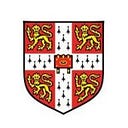The “king of scuttle flies” who continues to discover new species
Henry Disney admits that the task of classifying hundreds of species of scuttle fly has sometimes seemed a crazy undertaking. But his deteriorating eyesight hasn’t stopped him from becoming a world expert in the taxonomy of possibly the most challenging genus in the animal kingdom.
The insect specimens I work on are tiny. Because of my poor vision, I rely on a whole range of devices to magnify things. My specialism is the taxonomy of Phoridae flies, also known as scuttle flies. The differences between them can be very slight and it’s easy to misidentify them.
I’m the only person willing to look at any phorids from anywhere in the world. At the moment I’ve got a queue of specimens waiting for me to identify in my lab at the Zoology Department. They’ve recently been sent from Iran, Denmark, Kenya and Mongolia. Identification relies on fine details including making a series of accurate measurements — for example of their wings or bristles on their legs. I’m told that I’m known as the king of scuttle flies.
Estimates suggest that 80% of species have yet to be described. Of around 250 genera of scuttle flies, more than half the species belong to the giant genus Megaselia, which has been called the most challenging genus in the animal kingdom. At times the task of classifying them has seemed a crazy undertaking. It can be a question of looking at tiny variations in male genitalia.
I’m sometimes asked: what’s the point of studying flies? My answer is that they tell us a huge amount about evolution, specialisation and the world we live in. As a result of globalisation — the movement of people and goods across the world — insects are flourishing in new habitats.
Phorid flies are found worldwide with the greatest variety found in the tropics. Several species breed in corpses, including the infamous coffin fly. Over the years, I’ve worked with forensic scientists to pinpoint the probable time of death of the victim by using the life cycles of phorid flies as a guide.
I studied Natural Sciences at Cambridge. I went on to work at Flatford Mill Field Centre in Suffolk, and as a medical entomologist in British Honduras (now Belize) and Cameroon. For 14 years I ran the Field Centre at Malham Tarn in Yorkshire. In 1984 I came back to Cambridge to concentrate on the research into Phoridae I had started in Yorkshire.
When my wife died in 2012, I was faced with a choice. I’d never expected to outlive her and I considered that I’d already had nine lives, almost dying twice from cerebral malaria. I thought that I could either stay at home and mope or carry on with the work I loved. I opted for the latter.
That same year I had another big blow. I’d lost much of the sight in my left eye over 30 years earlier. In December 2012 I developed a serious problem in my other eye. It happened in the space of a single day. I was at a memorial service in a Cambridge church when a kind of horizon appeared in my good eye.
My GP sent me straight to Addenbrooke’s Hospital. The consultant couldn’t work out what was wrong. I was sitting in the bus at the hospital on my way home, when a junior doctor jumped on, told the driver not to set off, and told me to come back. There was stunned silence from the passengers. I spent two weeks in hospital undergoing tests.
The experts think the problem arose from a sarcoidosis. I’m on a combination of medications including steroids. Usually with steroids you put on weight but I haven’t. That’s probably because I walk about 20 miles a week, from home to my lab. I carry a hazel stick that I cut from the hedge at the bottom of my garden and painted white. Like me, it’s a bit wonky.
The badge I wear around my neck makes my life much easier. It warns people that I can’t see well and saves all sorts of confusion in shops, for example. On the reverse is a message that explains that I’m blind in one eye and purblind in the other but people kept asking me what purblind meant.
Friends and colleagues help me keep abreast of imaging technology. A combination of hardware and software enables me to keep working in my lab. Cambridge University’s Disability Resource Centre has been very helpful. My grandchildren too are brilliant at teaching me how to use the latest gadgets.
My 600th paper is currently in press. In fact I’ve got several papers approaching publication. One is co-authored with a Danish schoolmaster. We’ve identified 14 new species of Phorids. Another paper in press identifies other aquatic species that breed in water caught in the internodes of giant bamboo. Previous papers described species whose larvae live in the water of pitcher plants.
Scuttle flies are fiendishly clever. Many are parasitoids. This means that their larvae live in their hosts and eventually kill them. There are many species whose larvae live in leaf-cutter ants. They enter the host’s rear end and move forward consuming the non-vital organs before entering the ant’s head capsule where they pupate.
I was born just before the Second World War. My father was based in Sudan where he was an administrator. In 1942 my mother went with him to help with a relocation, leaving her children in Dorset. When it became too dangerous to travel, she was stranded. I didn’t see my parents until four years later when I was almost seven. Soon after I went to boarding school.
During the war we lived with a lady called Miss Wild in Dorset. She ran a small school. When the Germans began bombing Poole harbour we briefly moved to Devon. These changes, plus my experience on active service in Cyprus during my National Service, had a profound psychological effect. Much later I realised that I had been suffering from post-traumatic stress disorder.
In our parents’ absence our Aunt Sheila was officially our guardian. We spent holidays with her at Burnham Overy Staithe in north Norfolk where she had rooms above a boathouse. One of her rules was that we should bring back free fuel and food every day. This meant searching the marsh and creeks for sea coal and whelks.
I’ve always loved field work. I met my wife when we were both working at Flatford Mill Field Centre. During my time at Malham Tarn Centre I started and, with my colleague Dr Sarah Corbet, co-edited the Naturalists’ Handbooks series as practical guidebooks for others working in the field.
For years, friends and colleagues told me I should write about my life. I resisted because I felt that autobiography was often more fictitious than fiction. I eventually caved in and Regaining Life’s Winding Trail was published in 2017. I describe it as a rambling set of anecdotes and poetic reflections on my unusual life.
This profile is part of our This Cambridge Life series.

